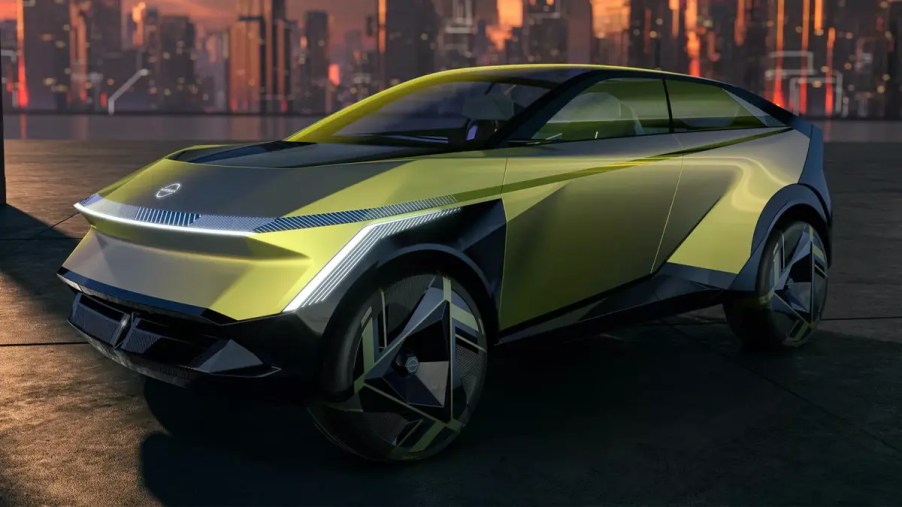
Nissan Hyper Urban Concept Signals Next SUV Blitz
In automobile design today, the future looks to be a combination of sculpturing by flat panels or faceting. And it is not just with Nissan, although that is what it is previewing as the next step beyond the Ariya. This is the Hyper Urban concept SUV EV, debuting today at the Japan Mobility Show. Comparing it to the Ariya, you can see the throughline from one to the other.
Not that there is much in common between the two. But faceting off some of the curvier surfaces of the Ariya, you can see that with a few more folds and flat surfaces, you get the Hyper Urban. And it may be borrowing just a hint of surfacing from Hyundai’s Ioniq 5 EV.
How close is the Nissan Hyper Urban to a production SUV?

Nissan says it is for “urban and suburban-based professionals who prioritize environmental sustainability. It is a more radical, expressive SUV without the off-road overtones. That’s not to say it won’t be off-road worthy when a production version comes around. We like the lime green paint, which Nissan describes as “changing chromatic expressions depending on the angle that light hits it.”

The butterfly doors show car-only features. But the front and rear lightbars are LED lights that will probably see production. The body is also broken up by black and lined graphic flourishes that get pretty aggressive, but that’s a good thing. It’s a Nissan concept, so why not add to the angular surfaces and breakups?
What kind of technology does the Hyper Urban EV have?

The general facet approach even applies to the wheel details, which in these images look to be 46-inch rollers. Just kidding. But honestly, they look like 25-inch or 26-inch wheels.
Inside, the facet theme carries through. With the image here, we see radical angles from the seat shells to the instrument panel. We’ll assume that the bright strips of light are strips of lighting from the inside to the outside. The “ottomans” for rear passengers integrate the rear of the front seats.
This concept car incorporates V2H function and V2G capability according to InsideEVs. Nissan says the updates can include a new instrument panel replacement having “the latest technologies and trends in graphic user interfaces.” The Japanese automaker is not revealing the powertrain specs as of yet.
How close is this to an actual production Nissan EV?
As with all concepts, you have to filter the pony show features from what will translate to production. We can see much of the concept exterior transitioning to a production SUV EV. It will all get toned down, but it offers an exciting glimpse at what is influencing Nissan designers and what they’re signaling to enthusiasts.
We just hope that more of the concept becomes reality rather than leading to a rather bland interpretation, as we’ve seen from GM and some other automakers.



